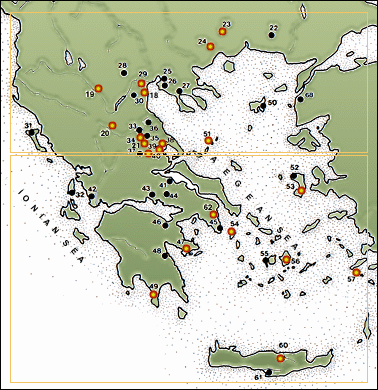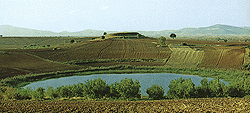 
Habitation of the Greek area during the Neolithic Period has been documented from the approximately 1000 sites recorded or excavated until the present in Modern Greece. The distribution of the sites shows that the first farming and stock-rearing
settlements were situated in coastal or inland areas, lowlands or hilly,
close to water sources (lakes, rivers, streams, springs). In their majority
they were open settlements, while cave-dwelling has also been recorded,
especially during the last phases of the Neolithic. |
|
The size of the Neolithic settlements is not known, since none of the known settlements so far have been thoroughly excavated. From the most fully investigated settlements (e.g. Sesklo, Dimini, Makriyialos) we can conclude that their size ranged from 500-6,000 square metres. The first farming and stock-rearing communities are estimated to have numbered 100 to 300 individuals. The organization and architectural structure of the settlements differed according to regions and periods. During the Early Neolithic, settlements consisted of huts with walls made of posts, while from the Middle Neolithic onwards houses with stone foundations and walls from mud-bricks (unfired bricks from a mixture of clay and hay) were built. Houses were one-room or additionally posessed an open or closed porch ("megaron-type"). They were built independently of each other, on the ground floor as a rule, while there are indications that two-storey dwellings existed as well. Several settlements were surrounded by ditches or stone enclosures (e.g. Argissa, Dimini), whose function is not entirely clear: for defense or to demarcate the limits of the settlement? |
